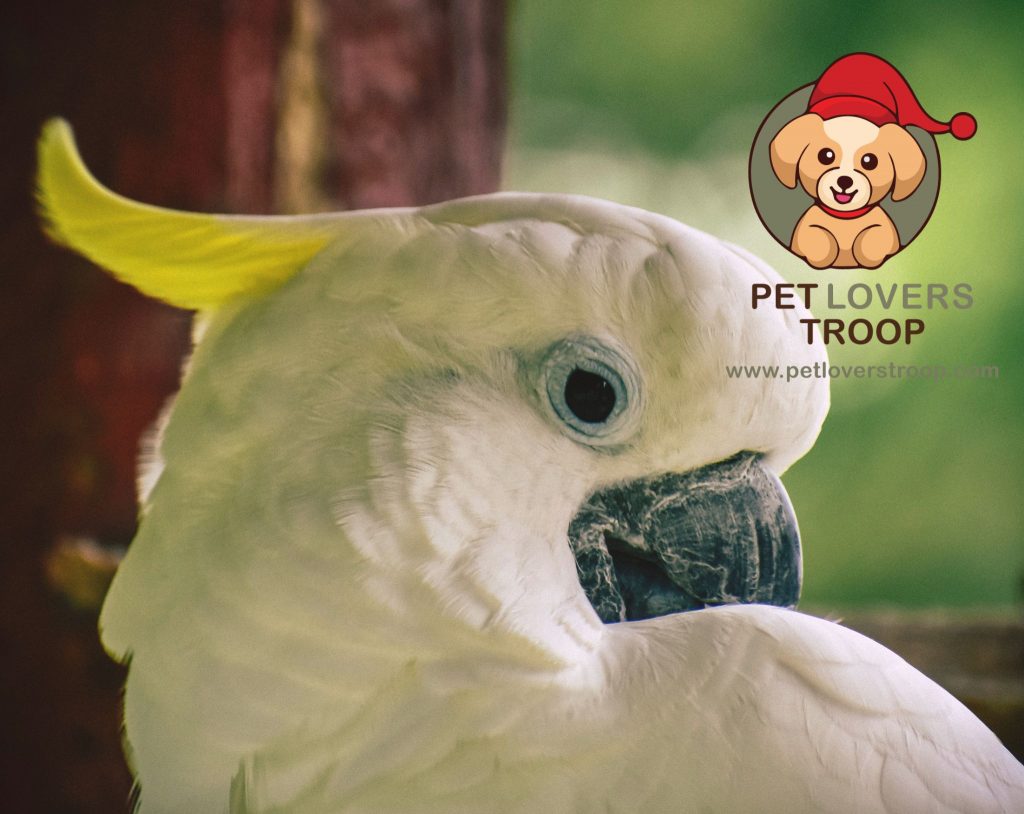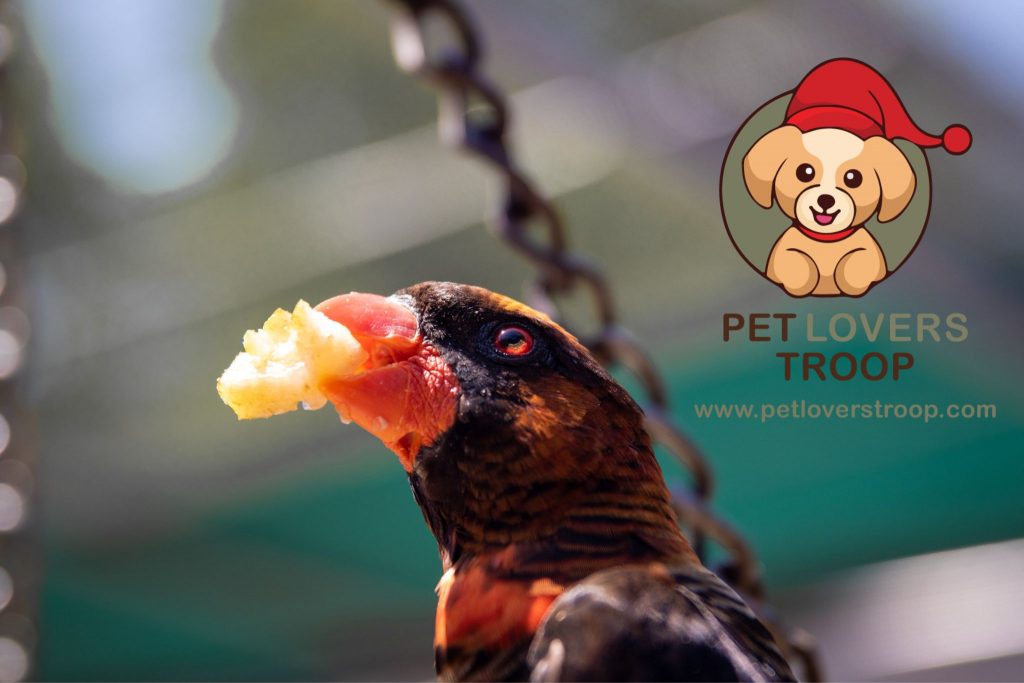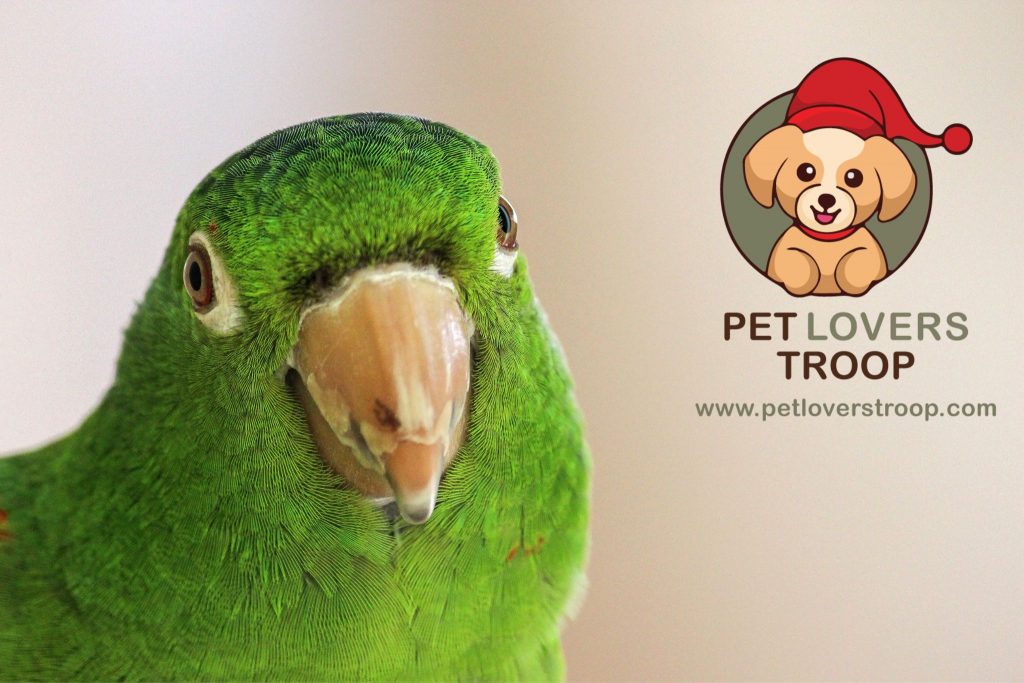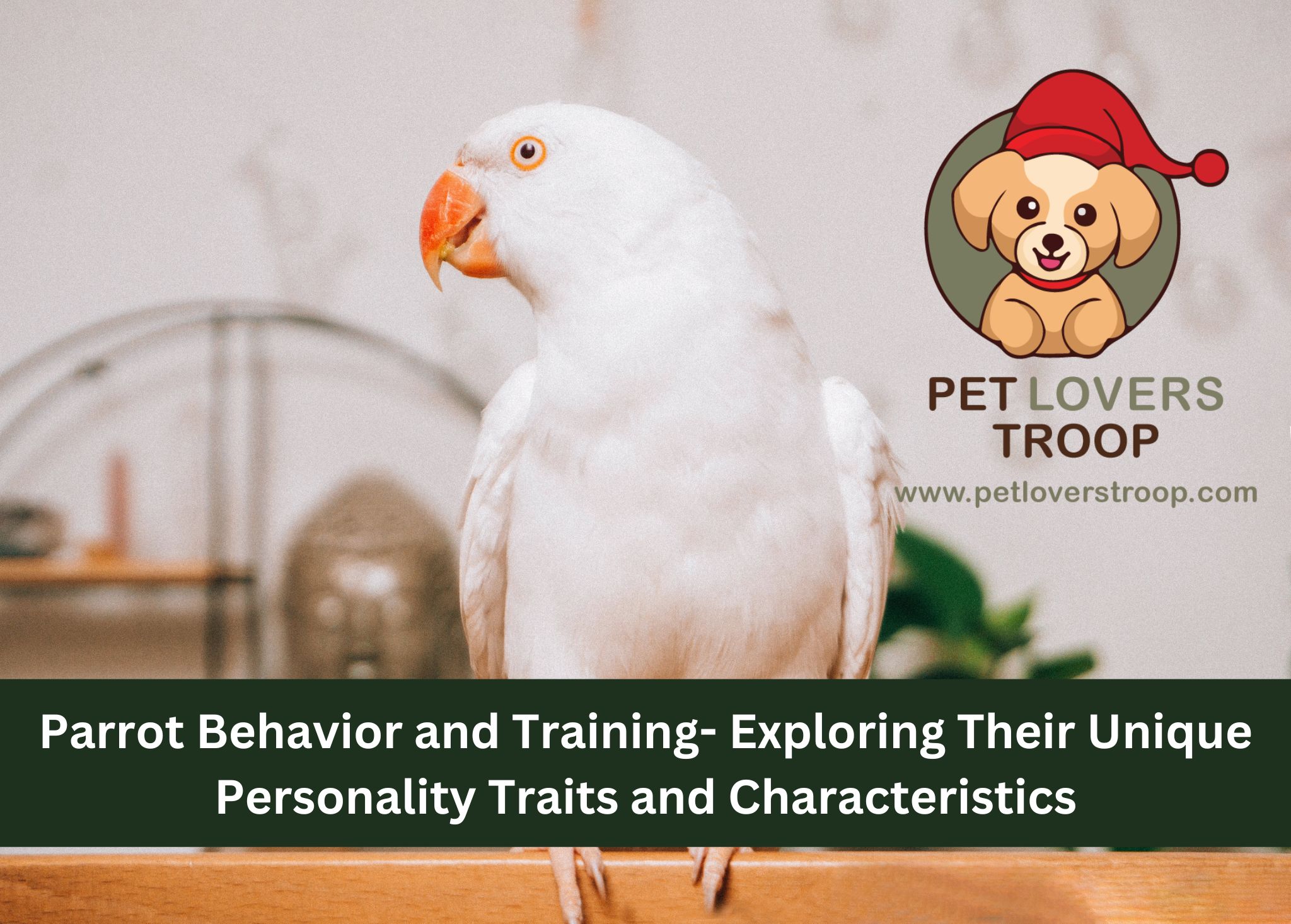You will find a lot of misinformation on the internet about parrot behavior and their training. There is a common misconception that parrots bite, throw tantrums, and destroy furniture. People also believe they are picky eaters and only like certain toys.
Read More: Beginners guide to choosing the right birdcage- February 2023
However, the truth is quite the opposite. After understanding their behavior, you will find that are the most loving creatures. This article will discuss general parrot behavior and how you can give them basic training.

Common Parrot Behavior
Some breeds develop this parrot behavior with time, while others may naturally be born with it. Here are a few common parrot behaviors that may be important to know.
Read More: Unveiling the Unique Personality Traits of Persian Cats: A Comprehensive Guide to Care-November 2023
Crest Parrot Behavior
If you own a cockatiel or a cockatoo, you will notice a difference in their crest when they are in a certain mood. If your parrot is relaxed, then their crest will be flat. However, if they are excited, then their crest will be raised. However, it may also mean fear or anger in some cases. One way to distinguish between anger and excitement is that the crest remains raised in the former.
Bouncing Parrot Behavior
Parrots are cutest when happy and express their happiness by bounding their bodies. Bouncing is also another way to show their excitement about something they like.
Leg Parrot Behavior
When your parrot is happy and content, you may notice them perching on one leg. It is even common for them to take a nap on one leg. However, parrots can get bumblefoot, too. It is a common illness that causes sores and bumps on the foot.
Learn more about: Ten Common Dog Diseases: How to Recognize Symptoms and Prevent Them- January 2024
If you own a cockatoo, you may notice them tapping their foot. They want you to know it is their territory when they do this. On the other hand, if your parrot collapses or squats down, he does not want to return to his cage. You must not give him attention if you want to discourage this habit. Soon, they’ll learn that this act will not work on you.

Drooping Wing
If you bathe your parrots, chances are that you will see them drooping their wings. They do this so that the water runs off after taking a bath. However, it may also be a sign of overheating, which is why you need to keep an eye out for this.
Fluffling Parrot Feathers
Your parrot may be fluffing their feathers to remove dander and dust. It may also be to dry out their feather after a bath. However, some parrots also have behavioral issues, which may be their way of showing aggression. Therefore, take extra caution when dealing with any new parrots.
Read more on: Keeping Rabbits Indoors or Outdoors: Evaluating the Pros and Cons of Rabbit Houses- January 2024
Parrot Biting or Nipping
Parrots are friendly pets, and they rarely ever bite. But, if your parrot does nip you, it may be because of hormones, or they may feel afraid or threatened. They may even display this aggression due to a certain change—such as a change in the environment or routine.
Headbobbing
Headbobbing is a display of happiness and is more common among young parrots. You may notice them headbobbing when they see or greet you or want your attention.
Learn more about: Understanding Gastric Stasis in rabbits. How to treat a sick rabbit at home? January 2024
Eye Pinning
If your parrot is pinning their eyes, it is a sign that you must proceed cautiously. They may do so for three primary reasons: out of fright, threat, or aggression. In this behavior, they usually contract and expand their pupils. In such cases, you must maintain distance from them.

Head Tilting
Parrots usually tilt their heads, and while it may look odd, it is a display of happiness.
Parrot Screaming
Parrots do not scream. If they are doing so, it probably means they are feeling danger. If they are vocalizing that much, then figure out what is causing this fright in them.
Feather Plucking in Parrots
Feather plucking is not at all normal. It is an indication of boredom. If your parrot is plucking its feathers persistently, then it means that they are under the stress of captivity. Parents of such parrots need to identify the stress factors and eliminate them.
Tail Parrot Behavior
Certain tail movements are also a sign of expression. For instance, if your parrot is wagging their tail, they are either about to poop or happy to see you. Bobbing of the tail in a particular beat may be a sign of illness. Fanning of the tail usually means that your parrot is angry or territorial.
Read More: Knowing what your parrots say with their tails
Regurgitating
The act of regurgitating is when your parrot ejects swallowed food from their beak. Older parrots usually feed their young ones through this process. However, if your parrot is not a parent yet and is regurgitating their parrot food, it could mean different things. For example, they love you if they are regurgitating food and looking at you with dilated pupils. Ignoring them in such situations will eventually give them a sign that it does not work with humans.

Parrot Training
Training them is one of the trickiest topics we can discuss on parrots. It is easier because of the variety of parrot species. Rather, there is a wide diversity in their personalities as well. However, you can follow these general points if you wish to train your pet parrot:
- If you plan to train your parrot, you must do so as early as possible. Young birds are better at learning than older ones. Moreover, older parrots are also reluctant to learn new things.
- Before you start training your parrots, you must get familiar with them. Make them accustomed to your hand or arm. Change their food trays and bowls more often so they know your hand does not harm them.
- Be consistent when training your parrots. Carry out daily training sessions at the same time. Consistency helps to speed up the process.
- Once you have developed routine, respect, and familiarity, you can take your training to the next level.
Read More: Teaching parrot tricks
How do you Train your Parrot to Talk?
Most parrots learn to talk and speak words they commonly hear in their environment. Some parrots learn to talk independently, while others may learn to communicate with positive reinforcements. African greys are best known for their talking skills.
Read more: Beginners guide to choosing the right birdcage- February 2024
Positive reinforcement means using rewards or treats in a way that the parrot associates them with words. Keeping your parrot near you is also important for this strategy to work.

How to Potty Train Birds?
Similar to cats and dogs, parrots can be taught to poop in a certain location. Potty training your parrots is essential if they spend much of their time out of their cage. Budgies and parrotlets are particularly difficult to train compared to the larger birds.
To potty train your bird, you must learn a toilet command. For instance, you can say poop time. When potty training, first teach them to sit on your hand. Then, you must take them to the place and say the poop command. When your parrot poop’s in the designated place, reward them with treats. You must never shout at your parrot if they poop in the wrong place.
How to Train a Parrot to Fly and Come Back?
Again, it is not easy to train your parrot to fly away and return to you. Your strategy for this will depend upon the type of bird you have, their age, and much more. However, one basic foundation of parrot teaching that teaches them to fly and come back involves positive reinforcement. You must also ensure that the negative reinforcements are kept to a minimum. Regardless of this, whichever strategy you select must be suitable for you and the bird as well.
Learn more about: Best Dog workouts: Fun daily exercises for your pup to keep them hale and hearty- January 2024
It would help to establish a certain level of trust with your parrot. Hold treats in your hand so that they know you feed them treats. After this, you have to decide on a contact call. You can use a clicker or one word that is easy to say, such as good or come.
Read More: Dog Training: Ten Essential Commands Every Dog Should Know- June 2023
Start with perching him somewhere and then moving your hand a few centimeters away, say the contact call, and feed him. Keep increasing the distance; they will associate the contact call with flying towards you.

How to Hold a Parrot?
Unlike cats and dogs, parrots are sensitive creatures, and you cannot just scoop them up to your liking. However, if you know the right techniques, you can safely hold your pet without worrying about squishing them incorrectly.
If you want to hold your parrot, then the first thing you can do is teach them how to step up. You can do this by teaching them how to step up. In this trick, bring your finger close to them and act the command call, you can then reward them with treats.
Read More: How to hold a parrot safely
Parrots have a sensitive physical structure; therefore, anyone must not squeeze, shake, or even strike their parrots. If you do so, it may eventually break their bones. If you plan to clip off their wings or nails, you need to hold them in a towel. However, ensure that you do not suffocate or strangle them.
Key Takeaways
Parrots are loving creatures. If you own one, then there is a big chance that they will soon grow on you. All the characteristics of parrot behavior that they express are functional. They learn these parrot traits by hereditary. Those parrots that don’t behave nicely are like that because they have no idea how to be good.
Read more on: The Right Tricks and Hacks to Deal with Cat Hairballs- January 2024
As pet parents, you are responsible for taking care of them, understanding them, and accepting them. It is also your responsibility to give them basic training with the help of positive reinforcement. You can teach them basic tricks such as speaking, stepping up, etc.
